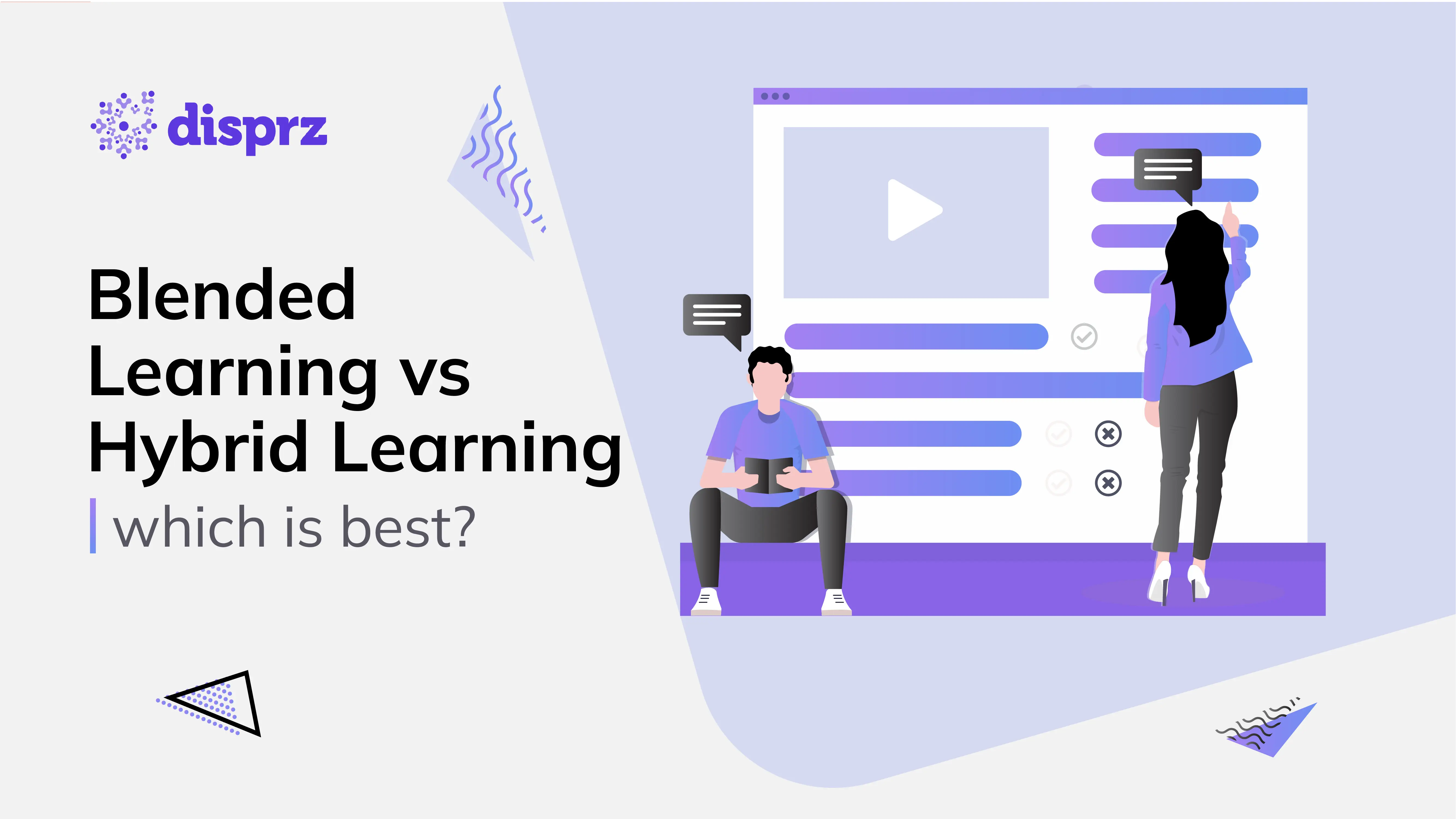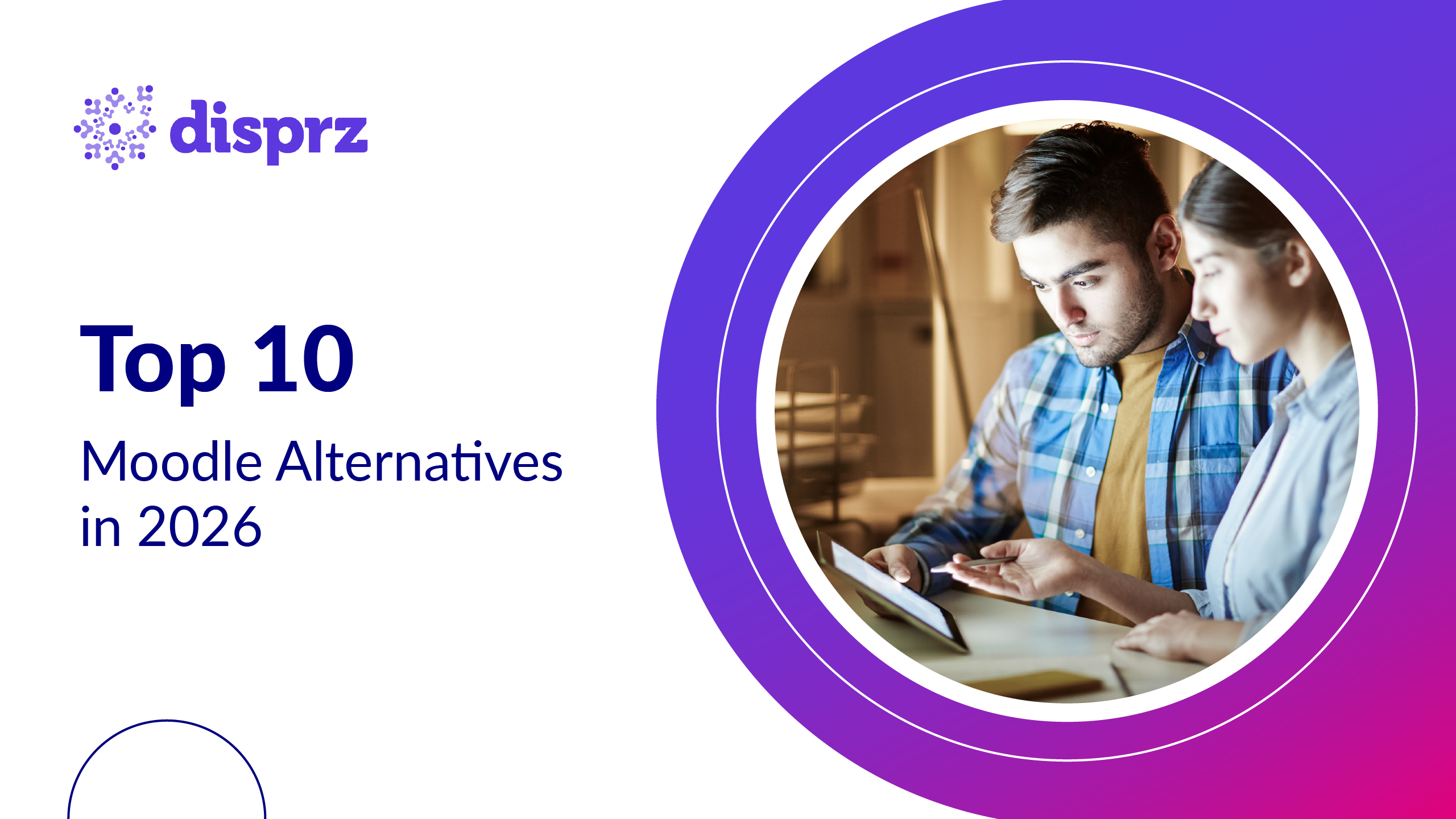Introduction to Blended and Hybrid Learning
Blended learning and hybrid learning are two distinct learning approaches that integrate in-person and online learning components.
Hybrid learning involves a mix of in-person and online participation, where some individuals attend classes physically while others join remotely via technology. In contrast, blended learning seamlessly combines traditional face-to-face instruction with online learning activities, allowing learners to engage in both formats.
While hybrid learning distinguishes between in-person and online participants, blended learning entails a unified learning experience for all participants, combining both modalities without differentiation between learners. Despite their differences, both approaches offer flexibility and versatility in learning, catering to diverse learning needs and preferences.
What is Blended Learning?
Blended learning combines traditional in-person training with online self-paced content, offering flexibility and engagement. Learners attend in-person sessions supplemented by online modules through a learning management system or eLearning platform.
This approach accommodates diverse learner types, with synchronous in-class sessions providing valuable feedback and asynchronous online modules allowing self-paced learning. Blended learning fosters engagement with interactive online content like videos, quizzes, and discussion boards, making it suitable for hybrid work environments.
What is Hybrid Learning?
Hybrid learning combines synchronous in-person and online training, ensuring accessibility and engagement for all participants. In a hybrid setup, some learners attend physically while others join virtually through conferencing tools. Success hinges on instructors' skills and seamless connectivity, enabling equal participation and interaction across both groups.
Proper preparation, infrastructure, and instructor support are crucial for effective hybrid learning sessions, ensuring a seamless learning experience for all participants.
Blended vs Hybrid Learning Models
This section summarizes the comparisons below
Participation
The hybrid model accommodates both remote and in-person attendance, while the blended model mandates physical presence but incorporates online elements.
Flexibility
Hybrid learning offers high flexibility and accommodates geographical diversity and scheduling needs. Blended learning provides moderate flexibility, allowing some control over learning pace and time.
Technology Use
In the hybrid model, technology is essential for connecting remote and in-person learners. In the blended method, technology enriches and complements the classroom experience.
Learning Environment
Hybrid learning keeps online and in-person learners entirely separate, while blended learning integrates online activities to work together seamlessly.
Objective
The hybrid model aims to offer equal learning opportunities regardless of location, while the blended model aims to enhance learning through technology integration.
Learner Control
In the hybrid model, learners control their location and, to some extent, the pace, while in the blended model, they have full control over the pace and partial control over the learning path.
Benefits of Blended Learning
Here are the benefits of blended learning
Supports Meta-Learning Principles
Blended learning integrates online and in-person elements to foster effective meta-learning principles, optimizing learning outcomes.
Cost-effective Spaced Learning
Blended learning facilitates spaced learning approaches efficiently, balancing the benefits of in-person interaction with the cost-effectiveness of online delivery.
Enhanced Peer-to-Peer Learning
Blended learning enables effective peer-to-peer and informal learning, reducing the need for extensive scaffolding and providing diverse learning experiences.
Flexible Instructional Formats
Blended learning allows for adaptable instructional formats tailored to specific content, learner needs, and learning objectives, exemplified by the flipped classroom model.
Customized Personalization
Blended learning offers greater potential for personalization compared to hybrid learning, enabling tailored exercises and activities based on individual learner skills, interests, and organizational needs.
Benefits of Hybrid Learning
Hybrid learning presents numerous benefits as follows

Flexibility
Hybrid learning offers flexibility by allowing learners to opt for in-person or remote attendance, accommodating diverse schedules and individual needs.
Inclusivity
Bridging the gap between physical and virtual learners, hybrid learning promotes inclusivity and addresses varied learning preferences.
Interactive Engagement
Through synchronous design, hybrid learning fosters active engagement among remote learners, facilitating interaction with both instructors and peers for an enriched learning experience.
Challenges of Blended Learning
These are the following challenges of the blended learning model
Setting Deadlines
Face-to-face training has clear objectives and set dates, contrasting with online courses that often lack specific deadlines. Online training empowers learners to control their pace, yet in combined formats, learners with varied speeds may encounter progress discrepancies.
Resistance to technology or Online learning
Blended learning may face resistance from learners hesitant to adopt technology-driven methods. Implementation requires technology use, potentially posing challenges for learners with concerns about internet access or navigating complex software.
Motivating learners to complete
The perceived ineffectiveness of blended learning, compounded by uninspiring course design and the absence of deadlines, often leads to waning motivation among learners. Consequently, they may prioritize other commitments over completing their coursework.
Change of delivery
Resistance to blended learning extends to trainers, who may struggle with technology and its added complexity. They must skillfully utilize technology and invest extra effort in planning and executing training. Some trainers may prefer traditional face-to-face sessions, perceiving them as simpler and superior.
Staying consistent
The final challenge in embracing blended learning revolves around consistency, requiring additional efforts for implementation and execution, potentially leading to demotivation if enrollment rates are low or learners fail to grasp its significance.
Challenges of Hybrid Learning
The challenges in hybrid learning are

Technical difficulties
Technical issues in hybrid learning disrupt both remote and in-person learners to mitigate this, trainers should receive technical training, remote learners should join sessions early, and recording/uploading sessions enable catching up.
Coordination & collaboration issues
Coordination may exclude remote participants from crucial discussions, leading to broader decision-making exclusions over time. Digital whiteboards and synchronous communication methods, such as online chats, facilitate inclusion and engagement for all learners.
Connecting with learner groups is hard
Hybrid environments may create social disconnects between learner groups, favoring in-person participants over remote ones. Trainers can foster inclusivity by sharing work on common platforms and mirroring remote learners' screens in the classroom, enhancing engagement for all.
Problem with learner engagement
Engaging learners in hybrid setups is challenging as methods may not overlap effectively, risking disengagement. Use activities suitable for both settings, facilitated by live streaming and screen sharing, and monitor in-person engagement using cues like eye contact and participation.
Blended Learning vs. Hybrid Learning - Which is Best?
Hybrid Learning
Flexibility
Balances online and offline learning, accommodating those who can't attend in person.
Inclusivity
Ensures remote and in-person learners receive equal instruction simultaneously.
Interaction
Uses technology to engage both remote and physical learners in real-time.
Blended Learning
Personalization
Combines in-person and online learning to tailor the experience to individual needs.
Engagement
Uses a mix of traditional and digital methods to enhance learner engagement and retention.
Versatility
Allows for diverse instructional formats, such as the flipped classroom model, maximizing the value of both in-person and online sessions.
Which is Best?
No One-Size-Fits-All
The best approach depends on your specific needs and goals.
Hybrid Learning
Ideal for flexibility and inclusivity, especially for those unable to attend in person.
Blended Learning
Best for personalized, engaging, and versatile learning experiences.
Making the Right Choice for Your Needs
Blended learning often aligns better with long-term learning goals, combining the best of in-person and online experiences for a personalized approach. Hybrid learning is ideal for immediate, widespread dissemination of information. Disprz’s platform supports both models, ensuring comprehensive and interactive learning.
Ready to enhance your learning programs? Schedule-a-demo!








